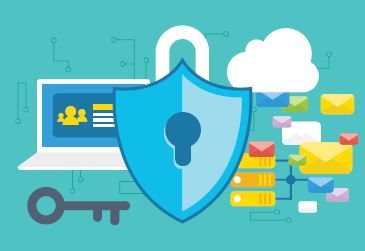DIGITAL CITIZENSHIP: RAISING “SMART” KIDS

Whether you call it digital citizenship, digital wellness, or digital ethics, it all boils down to how we should act when we’re online. T&L spoke with Paul Sanfrancesco, director of technology at Owen J. Roberts School District in Pottstown (PA), about how schools can model best practices in this new age of communication.
Why is digital citizenship important to school leaders and educators?
Threats, bullying, sexting—those are our responsibility. If it’s happening on our devices or in our building, or a student shows it to us, we have to report it. If a student says, “Look, I found a sexting picture,” legally, we have to call the police immediately. You see headlines all the time. When citizenship is lacking, the district has a problem.
We have to model smart decisions. Political affiliations, religious beliefs, a pro-marijuana page you “liked”—educators are meant to be neutral agents and need to keep it private. If an old MySpace account from college is out there, you don’t want a fifth grader coming across shots of their teacher doing kegstands. We need to set the example. Our students have 5,000 “friends.” We have to teach them that one day one of these people could be their boss. It will come back.
Who needs to be at the table when presenting information on digital citizenship?
Digital citizenship is about whole community awareness—including administrators, teachers, students, even extended staff. Bus drivers and maintenance and cafeteria personnel often have the last contact with students and need to understand protocol. If you see a phone left on the cafeteria floor or bus seat, instinct might suggest that you click to see who left it, but what if the screen displays a questionable photo or text? The reality is, that device should be turned in, untouched, to the principal.
Where is the line between school and family authority?
Tools and ideas to transform education. Sign up below.

Good digital citizenship starts at home. We need that buy-in from parents. We offer a parent series that covers how to keep children safe, how to monitor their tech usage, the psychology of tech, and how much is too much. We have a hands-on lab where students teach their parents about the current apps they’re using, including a Snapchat station and an Instagram station. This series allows us not only to showcase the great tech program we have, but also when there’s a problem no one can say we’re not doing anything because the classes are there for everyone to join. One of the biggest mistakes is just putting fear into parents. The DA or law enforcement can be very effective at intimidating, but to balance that message educators need to explain the pros—otherwise parents will be fearful of any tech in the school.
What’s the worst thing that can happen if we just let parents lead the way?
Parents are buying devices for children with no focus. I equate it to driving a car; we train [kids], make them take classes, and teach them about the vehicle, but in the end we can’t control the other drivers so we have to trust them and know they’re prepared to handle situations when they come up. But we’re handing the Internet and devices to four-year-olds with no direction. When I do a parent presentation, I put 16 app icons on the screen. Kindergartners can identify 80 percent of those apps. Most parents don’t get half of them right. In two months, the screen will look completely different. There might be “vault apps” where [students] keep sexting photos or troubling texts. Parents are so appreciative of the information. It’s important not to lecture but to give them the facts so they can fit this knowledge into their parenting style.
What steps can schools take to keep digital communication policies current?
State laws are fairly similar, but they are changing. Administrators need to consult their solicitor and approach the DA or local police department. Getting to know the authorities creates a great partnership, because then both sides understand how situations will be handled and are working towards the same goal, which is to keep the community safe.
Sascha has nearly two decades of experience as a freelance journalist writing for national magazines, including The Washington Post, LA Times, Christian Science Monitor, National Geographic Traveler, and others. She writes about education, travel and culinary topics.

